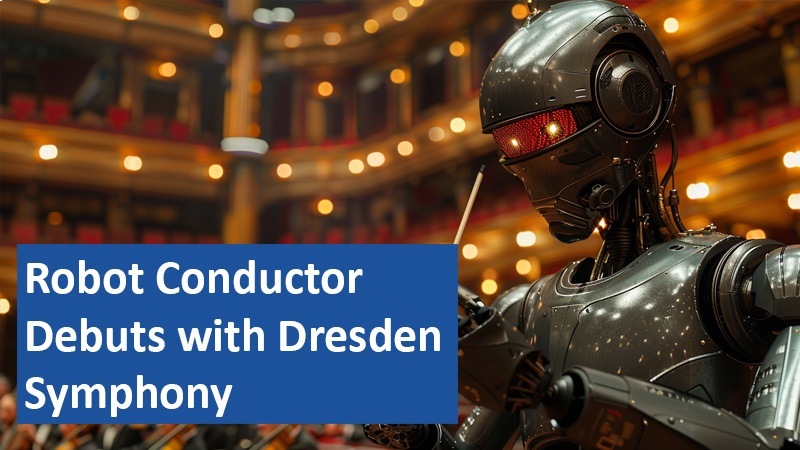A new chapter in music history was written as the Dresden Symphony Orchestra performed under the direction of a robot. With three arms and a glowing baton, the robot conductor impressed the audience by seamlessly guiding the musicians. Despite initial challenges, the machine even managed to lead different sections of the orchestra at varying tempos.
By Sadie Watkins
A Technological First in Music

For the first time ever, a robot led a live orchestra in a concert hall. The Dresden Symphony Orchestra premiered the innovative project, showcasing a robot with three arms capable of conducting different parts of the orchestra at distinct tempos. This groundbreaking performance demonstrated not only the capabilities of robotics but also how technology can enhance musical experiences. The robot’s glowing batons and precise movements added a futuristic element to the concert, capturing the audience’s attention.
Collaboration Between Science and Music
The success of the “Robot Symphony” was the result of close collaboration between the orchestra and specialists at the Technical University of Dresden. The robot was developed by experts in the university’s Centre for Tactile Internet, where it was trained to mimic the intricate gestures of a conductor. According to orchestra director Markus Rindt, the goal was not to replace human conductors, but to explore new possibilities in music. The project, which took years to develop, faced technical hurdles, yet it showcased the vast potential of human-robot collaboration.
Overcoming Technical Challenges
The process of teaching the robot to conduct was complex and time-consuming. Rindt spent countless hours working with researchers to program the machine, which initially struggled with even basic conducting motions. Over time, the robot improved and eventually mastered leading the orchestra through difficult passages. Its ability to direct different sections simultaneously with precision is a skill unmatched by any human conductor, making this achievement particularly significant for the future of orchestral performance.
A Vision for the Future
This project reflects a broader vision of merging human creativity with advanced robotics. While the robot conductor can perform with precision, humans still hold the reins in terms of artistic control. The researchers behind the project emphasize that technology like this can expand what is possible in complex, high-precision tasks. The Dresden Symphony’s investment in this groundbreaking project has paved the way for more collaborations between music and technology, opening doors for future compositions designed specifically for robotic conductors.
The performance of the “Robot Symphony” demonstrates how technology and art can merge in innovative ways. Despite the robot’s technical precision, human creativity remains essential. However, this project opens up exciting possibilities for future musical experiments involving robots.
Based on information from www.welt.de and own research.